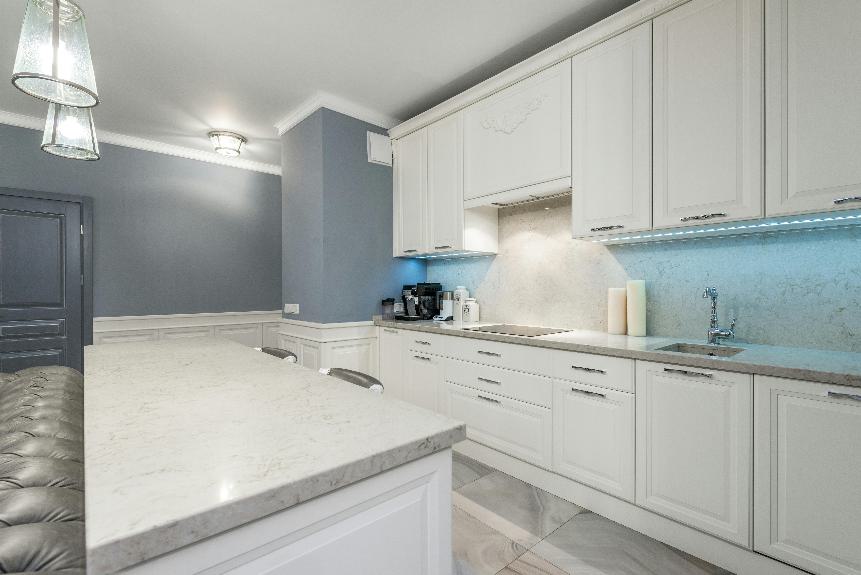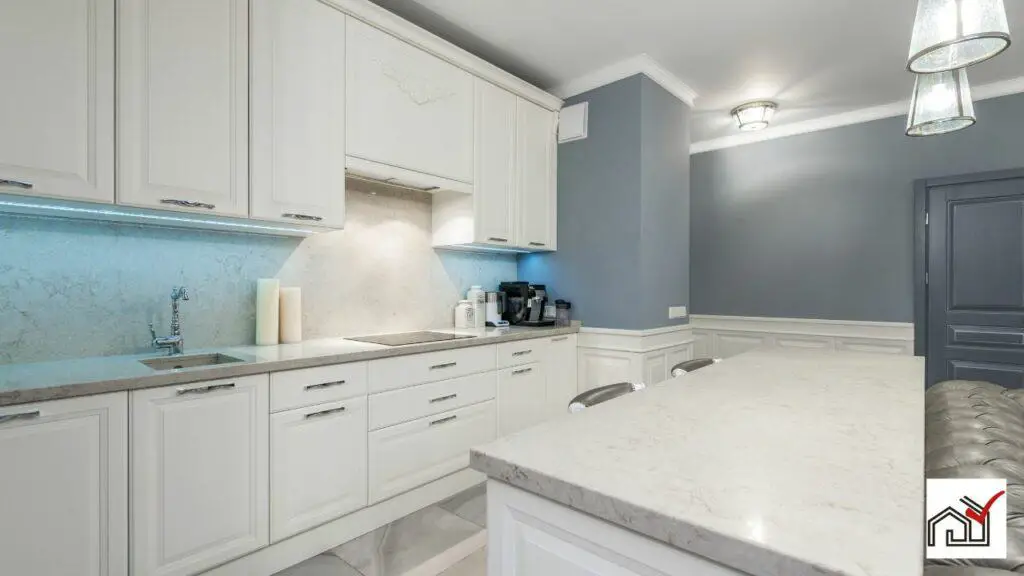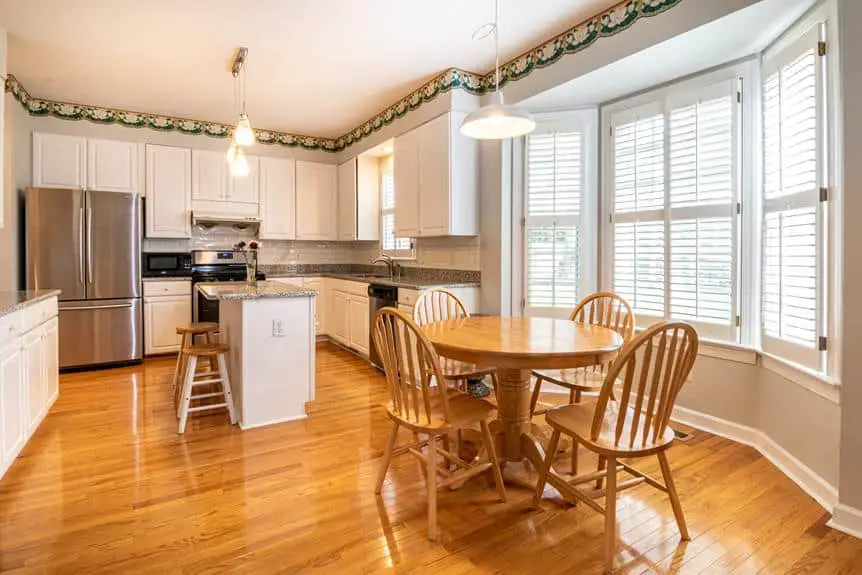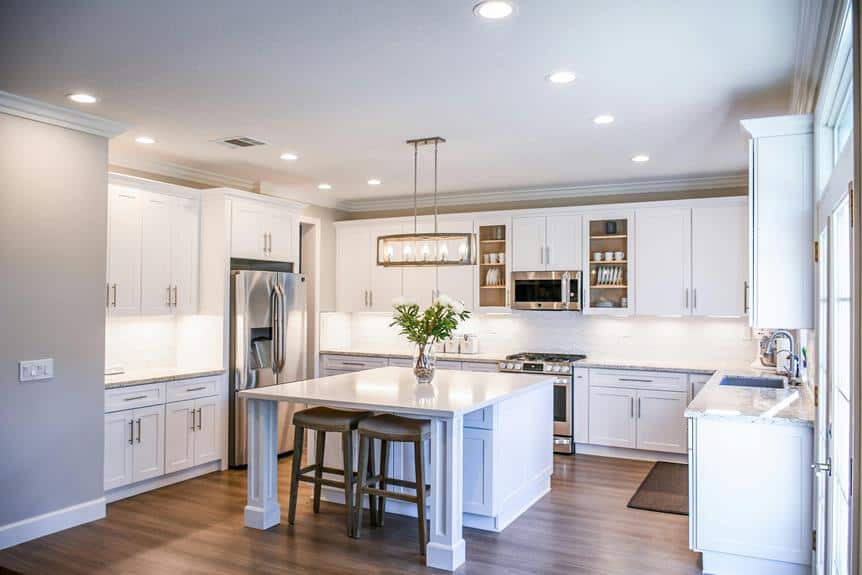Kitchen countertops do not necessarily have to match the cabinets. The choice to match or contrast depends on personal preference and the desired look for the kitchen.
Matching countertops and cabinets can create a cohesive look and a sense of order. On the other hand, contrasting them can add visual interest and make a statement.
The decision should consider the kitchen's style and the individual's taste.
Understanding Kitchen Harmony
Creating a harmonious kitchen design requires balancing the look of cabinets and countertops. These elements make up much of the kitchen's visual space and should complement each other. Achieving harmony isn't just about matching colors; it involves selecting colors and materials that suit the homeowner's taste.
Choosing matching colors can give a kitchen a clean, uniform look that suits minimalist styles. Contrasting colors, however, add depth and personality, often working well in eclectic or traditional settings. An accent color can be used to draw attention or tie the color scheme together.
The atmosphere of the kitchen is also affected by color choices. Light colors can make a kitchen feel more spacious and welcoming, while dark colors can create warmth and elegance. The materials used, such as stone, wood, or laminate, also play a role in the kitchen's feel, influencing both texture and pattern.
The decision to match or contrast cabinets and countertops is a personal one. A harmonious kitchen is one where design elements reflect the user's lifestyle and preferences, resulting in a space that is both practical and visually appealing.
Pros of Matching Surfaces
Matching kitchen countertops with cabinets simplifies design, creating a seamless aesthetic that improves both function and style. Opting for matched surfaces in a kitchen yields a unified appearance, bringing together different elements in a purposeful, cohesive manner. Choosing matching materials and colors results in a harmonious and refined space.
Matching cabinets and countertops reduces the risk of a mismatched color scheme. It allows for a fluid visual experience, potentially making a kitchen feel larger, an advantage in smaller spaces where continuity can give an expansive illusion.
Matching the outer countertops with cabinetry allows the kitchen island to stand out if it has a contrasting color or material, providing a visual highlight without disrupting the overall unified design. This approach offers the opportunity to personalize the kitchen while maintaining a consistent look.
Creative Contrast Benefits
Creative contrast in kitchen design improves visual interest and creates a unique look. Combining dark cabinets with light countertops, or the opposite, adds sophistication and can make the kitchen a focal point of the home. This contrast helps each design element to stand out and highlights different textures and materials.
Using creative contrast can make a kitchen appear more spacious and inviting. For example, dark cabinets with a light countertop can create an illusion of a larger kitchen, while light cabinets with a dark countertop can make the space feel cozier. Adding colorful accessories or appliances can enhance the kitchen's main color scheme.
Black and white kitchens are a popular example of contrast that offers a classic and elegant look. This color scheme is versatile and allows for easy updates with different accent colors.
Contrasting colors can also define areas within an open-plan kitchen. For instance, a different countertop material on the island can draw attention to it as a central feature while still coordinating with the rest of the space.
Material and Pattern Choices
Material and pattern selection is critical in kitchen design, affecting both appearance and functionality. Countertops and cabinets offer numerous choices. Durability and maintenance are key considerations alongside style.
Countertops serve as a kitchen centerpiece. Options such as granite, quartz, marble, or quartzite provide durability and style. These materials come in various colors and types, allowing for customization to fit the kitchen's design. It is essential to choose countertop colors that complement the cabinetry for a unified appearance. For example, dark granite can contrast with light cabinets, while white quartz may suit dark cabinets for a contemporary look.
The kitchen's color scheme, including flooring, should influence material and pattern choices. A typical approach involves using two main colors for cabinets and countertops and adding a third accent color through elements like backsplashes. A dark backsplash can create depth if countertops are light, while a backsplash that matches darker countertop tones can bring cohesion to the space.
The objective is to design a welcoming and practical kitchen. The variety of materials and patterns available supports individual expression and the creation of a unique kitchen space.
Making Your Decision
Choosing the right balance between countertops and cabinets is crucial for both aesthetic appeal and practicality. A kitchen remodel should focus on ease of use and maintenance as well as visual appeal. Ensure that countertops, flooring, and cabinets complement each other to create an inviting atmosphere.
Select colors based on the desired style of your kitchen, whether it's modern or traditional, and ensure design elements align with your preference. Monochromatic schemes fit minimalist kitchens, while eclectic spaces may incorporate contrast and varied materials. Take into account natural light, kitchen size, and existing decor in your decisions.
Consulting an interior designer can be beneficial for advice on coordinating countertop colors with cabinets and choosing between matching or contrasting materials for different kitchen areas.
Your decision to match or mix depends on personal taste and the details of your kitchen remodel. Consider style, functionality, and design principles to create a kitchen that is both attractive and a reflection of your taste and lifestyle.




